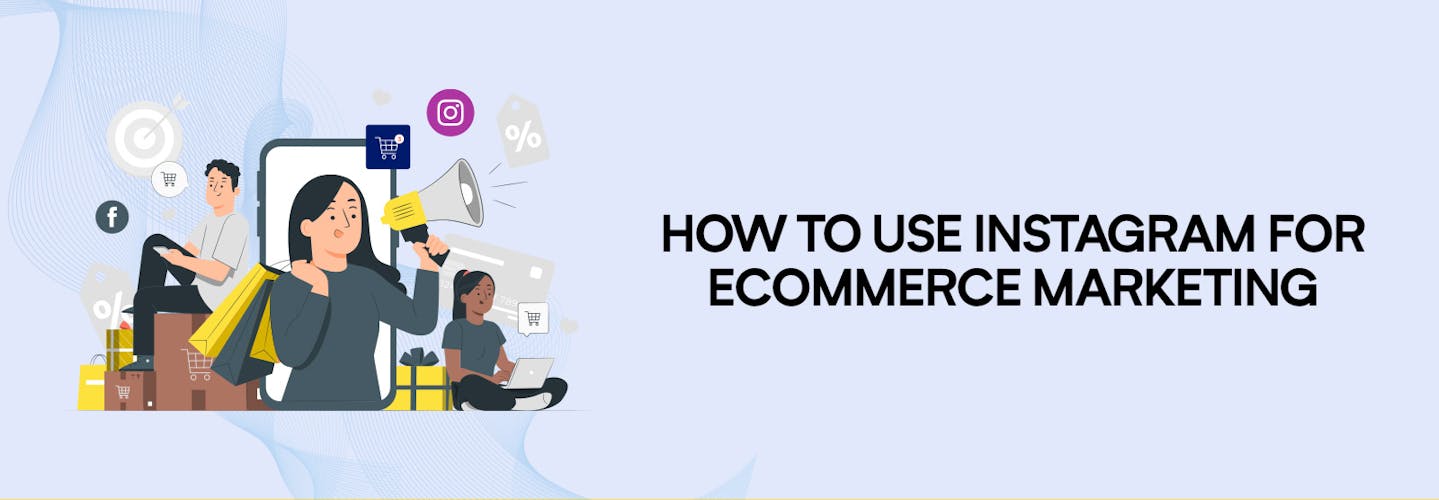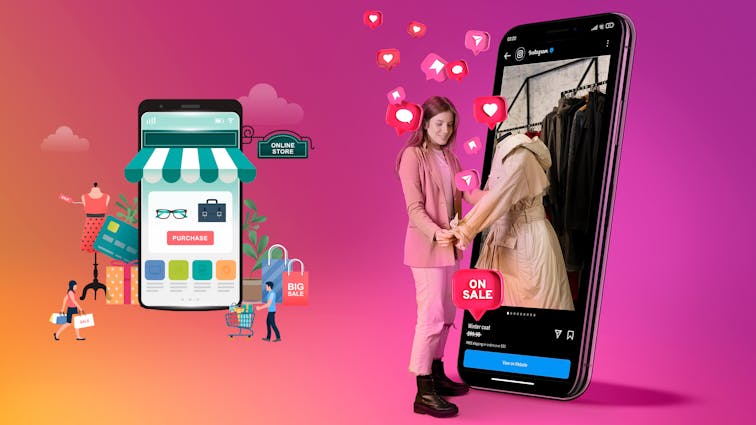
How to Use Instagram for Ecommerce Marketing
The Rise of Instagram in the Marketing World
In the ever-evolving landscape of digital marketing, Instagram has emerged as a powerhouse.
With over 2 billion active users monthly, it’s no longer just a platform for sharing photos and videos; it’s a global marketing phenomenon.
The visual-centric nature of Instagram has made it a perfect fit for brands, especially in the ecommerce sector.
It’s not just about posting pretty pictures; it’s about telling a story, engaging with an audience, and driving sales.
Importance of Instagram for Ecommerce Businesses
For ecommerce businesses, Instagram is more than a social media platform; it’s a vital marketing tool. 72% of users rely on social media for purchasing decisions, and Instagram stands out as a leading influencer.
With features like shoppable posts and Instagram Stories, ecommerce brands can showcase their products in a visually appealing way, connecting with their audience on a personal level.
Overview of Instagram’s Potential Reach
Instagram’s reach is not confined to a particular age group or demographic. It spans across various age groups, with Over 70% of Instagram users are under 35 years old
This wide reach makes it an ideal platform for ecommerce marketing, allowing businesses to tap into different market segments.
Whether it’s fashion, electronics, or health products, Instagram provides a stage for brands to reach millions of potential customers.
What Is Instagram Ecommerce?
Instagram Ecommerce refers to the use of Instagram as a platform to promote, sell, and buy products and services.
It’s not just a trend; it’s a dynamic way of conducting business in the digital age. With features like shoppable posts, product tags, and Instagram Checkout, the platform has transformed into a full-fledged ecommerce marketplace.
Through Instagram Ecommerce, businesses can create visually appealing catalogs, offer exclusive deals, and even collaborate with influencers for broader reach.
It’s a complete ecosystem that connects sellers with buyers through engaging content and seamless shopping experiences.
Why Instagram Marketing is Beneficial for Ecommerce?

Brand Awareness and Interaction
- Visual Engagement: Utilizing images and videos to create eye-catching content.
- Audience Interaction: Engaging with followers through comments, likes, and direct messaging.
- Building Brand Identity: Crafting a unique brand voice and style.
- Influencer Collaboration: Partnering with influencers to extend reach and credibility.
- Community Building: Creating a loyal community through consistent interaction and shared values.
Product Discovery and Sales Boost
- Shoppable Posts: Enabling direct purchases through tagged products in posts.
- Instagram Shopping: Transforming profiles into virtual storefronts.
- Sales Conversion: Integrating with ecommerce platforms for seamless sales tracking.
- Product Launches: Utilizing Instagram for exclusive product reveals and promotions.
- Customer Reviews and UGC: Encouraging user-generated content and reviews for authenticity.
Frictionless Shopping Experiences on Instagram
- Instagram Checkout: Providing in-app purchases for a streamlined shopping experience.
- Targeted Advertising: Utilizing Instagram’s algorithm for personalized advertising.
- Enhanced User Experience: Designing an intuitive shopping journey within the app.
- Customer Support Integration: Offering in-app customer service for immediate assistance.
- Cross-Platform Integration: Linking Instagram with other social media for a unified brand presence.
- Analytics and Insights: Leveraging Instagram’s analytics tools for performance tracking and optimization.
Getting Started with Instagram: Profile Optimization
Before diving into the world of Instagram ecommerce marketing, it’s essential to set up your profile for success.
A well-optimized profile acts as your brand’s virtual storefront, and here’s how you can make it compelling:
1. Creating a Compelling Bio
- Showcase Your Brand: Your bio is the first thing visitors see. Make it engaging by highlighting what your brand stands for.
- Include Contact Information: Provide an email or phone number for easy customer inquiries.
- Utilize Emojis: Add relevant emojis to make your bio visually appealing.
2. Adding Relevant and Highly Searched Keywords
- Keyword Research: Identify keywords that resonate with your brand and are commonly searched by your target audience.
- Incorporate Keywords: Use these keywords naturally in your bio to enhance discoverability.
3. Incorporating a Call-to-Action (CTA)
- Direct Action: Include a clear CTA like “Shop Now” or “Contact Us” to guide visitors to take immediate action.
- Link to Your Store: Use the website link in your bio to direct traffic to your online store or a specific landing page.
Different Ways to Use Instagram for Ecommerce
Instagram offers a plethora of tools and features that can be leveraged for ecommerce marketing. Here’s how you can utilize them:
1. Utilizing Hashtags for Brand Awareness
- Create Brand-Specific Hashtags: Encourage followers to use your unique hashtags to increase brand visibility.
- Research Trending Hashtags: Use popular hashtags related to your industry to reach a broader audience.
2. Leveraging Instagram Stories for Product Showcasing
- Show Behind-the-Scenes: Share the making of your products or a day in the office.
- Highlight Products: Use Stories to showcase new arrivals or special discounts.
3. Instagram Ads and Their Functionality
- Targeted Advertising: Create ads tailored to your target audience’s interests and behaviors.
- Track Performance: Utilize Instagram’s analytics to monitor ad performance and ROI.
4. Selling Through Instagram: Shoppable Posts
- Tag Products: Make your posts shoppable by tagging products directly.
- Seamless Shopping Experience: Allow customers to purchase without leaving the app.
How to Set Up an Instagram Shop?

Setting up an Instagram Shop is a great way to showcase your products and reach a wider audience. Here are the steps to set up an Instagram Shop:
- Make sure your business is eligible: To set up an Instagram Shop, you must have a business account on Instagram and sell physical goods that comply with Instagram’s commerce policies.
- Connect your Instagram account to a Facebook Page: To set up an Instagram Shop, you need to connect your Instagram account to a Facebook Page. Make sure you have admin access to the Facebook Page.
- Set up your shop: Go to your Instagram profile and tap the three lines in the top right corner. Select “Settings” and then “Business.” Tap “Instagram Shopping” and select the Facebook Page you want to connect to your Instagram account. Follow the prompts to set up your shop.
- Add products to your shop: Once your shop is set up, you can add products to it. Go to your Instagram profile and tap the three lines in the top right corner. Select “Settings” and then “Business.” Tap “Instagram Shopping” and then “Products.” Follow the prompts to add your products.
- Submit your shop for review: After you’ve added products to your shop, you need to submit it for review. Instagram will review your shop to make sure it complies with their policies. This process can take a few days.
- Activate Shopping: Once approved, go to ‘Settings’ in the Instagram app, tap ‘Business,’ and then ‘Shopping.’ Select the catalog you want to connect and tap ‘Done.’
- Tag Products in Posts: You can now tag products in your posts and stories, allowing users to tap and buy directly.
- Start selling: Once your shop is approved, you can start selling your products on Instagram. Your followers can now see your products in your posts and stories, and they can also visit your shop to browse and buy your products.
In summary, setting up an Instagram Shop involves connecting your Instagram account to a Facebook Page, setting up your shop, adding products, submitting your shop for review, and starting to sell. By following these steps, you can create a seamless shopping experience for your followers and grow your business on Instagram.
Instagram Marketing Strategies for Ecommerce
A successful Instagram ecommerce marketing strategy requires careful planning and execution. Here’s a step-by-step guide to help you navigate this process:
1. Identifying Goals and Target Audience
- Set Clear Objectives: Whether it’s increasing brand awareness or boosting sales, define your specific goals.
- Understand Your Audience: Analyze your target audience’s demographics, interests, and behaviors to create tailored content.
2. Studying Competitors and Finding Marketing Gaps
- Analyze Competitors: Study your competitors’ strategies to identify what works and what doesn’t.
- Find Unique Angles: Discover gaps in the market that you can fill with your unique selling proposition.
3. Creating a Monthly Editorial Calendar
- Plan Ahead: Outline your content for the month, including posts, stories, and ads.
- Align with Promotions: Coordinate your content with sales, product launches, or other marketing efforts.
4. Engaging with the Audience for Growth
- Respond to Comments: Engage with your followers by responding to comments and messages.
- Encourage User-Generated Content: Ask your audience to share their experiences with your products using a specific hashtag.
Tips and Best Practices

To make the most of your Instagram ecommerce marketing efforts, consider these tips and best practices:
1. Engaging with Every Comment
- Build Community: Responding to every comment fosters a sense of community and encourages further engagement.
2. Refining and Learning from Each Tactic
- Analyze Performance: Regularly review your analytics to understand what’s working and what needs improvement.
- Iterate and Improve: Continuously refine your strategies based on insights and feedback.
3. Trying Different Types of Content (e.g., IGTV, Boomerang, Reels, Posts)
- Diversify Content: Experiment with various content formats to keep your audience engaged.
- Stay Current: Utilize new Instagram features to stay ahead of the curve.
4. Influencer Marketing Strategies
- Collaborate with Influencers: Partner with relevant influencers to extend your reach.
- Align with Brand Values: Ensure that influencer collaborations align with your brand’s values and goals.
Successful Instagram Ecommerce Campaigns
1. Glossier:
Glossier is a beauty brand that has built a loyal following on Instagram by showcasing user-generated content and creating a sense of community.
The brand’s Instagram feed features photos of real customers using their products, which has helped to build trust and credibility with their audience.
Glossier also uses Instagram Stories to showcase new products and promotions, and they often collaborate with influencers to reach new audiences.
2. MVMT:
MVMT is a watch brand that has used Instagram to build a strong brand identity and drive sales.
The brand’s Instagram feed features lifestyle photos that showcase their watches in different settings, which has helped to create a sense of aspiration and desire among their audience.
MVMT also uses Instagram Stories to showcase new products and promotions, and they often collaborate with influencers to reach new audiences.
3. Gymshark:
Gymshark is a fitness apparel brand that has built a massive following on Instagram by showcasing user-generated content and creating a sense of community.
The brand’s Instagram feed features photos of real customers using their products, which has helped to build trust and credibility with their audience.
Gymshark also uses Instagram Stories to showcase new products and promotions, and they often collaborate with influencers to reach new audiences.
Insights from Brands that have Effectively Used Instagram
- Use User-Generated Content: Many successful ecommerce brands on Instagram use user-generated content to showcase their products. By featuring photos of real customers using their products, these brands are able to build trust and credibility with their audience.
- Create a Sense of Community: Successful ecommerce brands on Instagram often create a sense of community by engaging with their audience and showcasing the lifestyle associated with their products. By creating a sense of aspiration and desire, these brands are able to build a strong brand identity and drive sales.
- Collaborate with Influencers: Many successful ecommerce brands on Instagram collaborate with influencers to reach new audiences. By partnering with influencers who have a large following in their target market, these brands are able to increase their reach and drive sales.
Conclusion:
Instagram has proven itself as a vital tool in the ecommerce marketing arsenal.
From building brand awareness to driving sales through shoppable posts, the platform offers a plethora of opportunities for businesses to connect with their audience and grow their online presence.
Summary of Key Takeaways
- Brand Building: Utilize Instagram’s visual nature to showcase your products and build brand identity.
- Engagement: Foster community through consistent engagement, user-generated content, and influencer collaborations.
- Sales Growth: Leverage shoppable posts, Instagram Shopping, and targeted ads to boost sales.
- Strategic Planning: Implement a well-planned strategy, including profile optimization, content planning, and performance analysis.
If you haven’t already, it’s time to embrace Instagram as a vital ecommerce marketing tool.
The success stories and strategies outlined in this guide provide a roadmap to harness the platform’s potential.
Whether you’re just starting or looking to enhance your existing efforts, Instagram offers endless possibilities to grow your ecommerce business.
Ready to start or enhance your Instagram marketing efforts? Don’t wait; the time to act is now.
Dive into the world of Instagram ecommerce marketing and create a success story of your own.
Additional Resources
For those looking to delve deeper into Instagram marketing, here are some valuable resources:
- Instagram Marketing Tools: Hootsuite for scheduling and analytics, Canva for visual content creation.
- Guides and Templates: Instagram for Business offers official guides and best practices.
- Further Reading: Books like “Instagram Power” by Jason Miles provide comprehensive insights.
- Online Courses: Platforms like Udemy offer courses on Instagram marketing tailored to various skill levels.
These resources provide the tools, knowledge, and inspiration needed to succeed in Instagram ecommerce marketing. From beginner-friendly guides to advanced analytics tools, these links offer something for everyone.
FAQ’s:
1. What Ecommerce Platforms Are Best for Instagram?
Several ecommerce platforms integrate seamlessly with Instagram, allowing for a smooth shopping experience. Some of the top platforms include Aasaan, Shopify, WooCommerce, BigCommerce, and Magento. These platforms offer features like shoppable posts and in-app checkout, enhancing the Instagram shopping experience for both businesses and customers.
2. Can You Use Instagram for Ecommerce?
Yes, Instagram can be an effective platform for ecommerce. With features like shoppable posts, Instagram Shopping, and targeted advertising, businesses can showcase their products, engage with their audience, and drive sales directly through the platform. Instagram’s visual nature makes it a powerful tool for ecommerce marketing.
3. Can I Sell Products Directly on Instagram?
Yes, you can sell products directly on Instagram. By setting up Instagram Shopping and utilizing shoppable posts, businesses can tag products in their posts and stories, allowing users to purchase directly within the app. This creates a seamless shopping experience and can lead to increased conversions.
4. Is Instagram Good for Ecommerce?
Instagram is an excellent platform for ecommerce. Its visual nature, combined with features like shoppable posts and targeted advertising, makes it a powerful tool for showcasing products and driving sales. With over a billion active users, Instagram offers a vast audience and opportunities for brand awareness, engagement, and growth in the ecommerce sector.
5. How to Find Followers on Instagram for Ecommerce?
Finding followers on Instagram for ecommerce involves a combination of strategies:
- Create Engaging Content: Share visually appealing images, videos, and stories that resonate with your target audience.
- Utilize Hashtags: Use relevant and trending hashtags to increase visibility.
- Collaborate with Influencers: Partner with influencers in your industry to reach new audiences.
- Engage with Your Community: Respond to comments, like and share related content, and encourage user-generated content.
- Run Targeted Ads: Use Instagram’s advertising tools to reach potential followers interested in your products.
By implementing these strategies, you can build a loyal following on Instagram, tailored to your ecommerce business.








